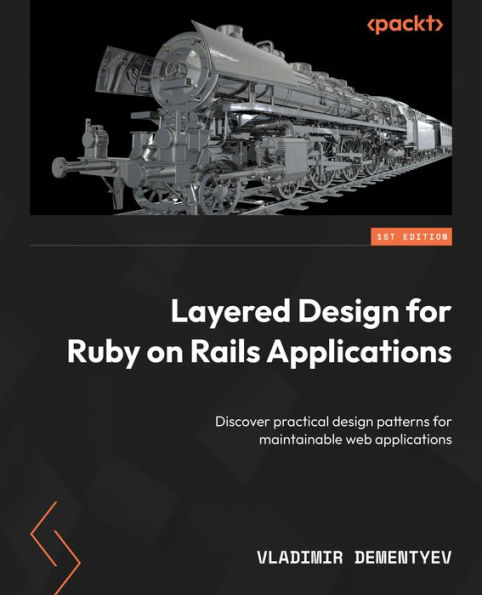Ruby on Rails is an open-source framework for building web applications from scratch while focusing on productivity, leveraging the power of the convention-over-configuration principle, and the well-defined model-view-controller pattern, assisting the developers in building useful features. However, this initial simplicity often leads to uncontrollable complexity turning the well-structured codebase into a hardly maintainable mess. This book aims to help you keep the code maintainable while working on a Rails application.
You’ll start by exploring the framework capabilities and principles, allowing you to reap the full potential of Rails. Then, you’ll tackle many common design problems by discovering useful patterns and abstraction layers. By implementing abstraction and dividing the application into manageable modules, you’ll be able to concentrate on specific parts of the app development without getting overwhelmed by the entire codebase. This strategy also encourages code reuse, simplifying the process of adding new features and enhancing the application's capabilities. Additionally, you’ll explore further steps in scaling Rails codebase, such as service extractions.
By the end of this book, you’ll be a code design specialist with a deep understanding of the Rails framework principles.
Ruby on Rails is an open-source framework for building web applications from scratch while focusing on productivity, leveraging the power of the convention-over-configuration principle, and the well-defined model-view-controller pattern, assisting the developers in building useful features. However, this initial simplicity often leads to uncontrollable complexity turning the well-structured codebase into a hardly maintainable mess. This book aims to help you keep the code maintainable while working on a Rails application.
You’ll start by exploring the framework capabilities and principles, allowing you to reap the full potential of Rails. Then, you’ll tackle many common design problems by discovering useful patterns and abstraction layers. By implementing abstraction and dividing the application into manageable modules, you’ll be able to concentrate on specific parts of the app development without getting overwhelmed by the entire codebase. This strategy also encourages code reuse, simplifying the process of adding new features and enhancing the application's capabilities. Additionally, you’ll explore further steps in scaling Rails codebase, such as service extractions.
By the end of this book, you’ll be a code design specialist with a deep understanding of the Rails framework principles.

Layered Design for Ruby on Rails Applications: Discover practical design patterns for maintainable web applications
298
Layered Design for Ruby on Rails Applications: Discover practical design patterns for maintainable web applications
298Related collections and offers

Product Details
| ISBN-13: | 9781801812436 |
|---|---|
| Publisher: | Packt Publishing |
| Publication date: | 08/30/2023 |
| Sold by: | Barnes & Noble |
| Format: | eBook |
| Pages: | 298 |
| File size: | 3 MB |
